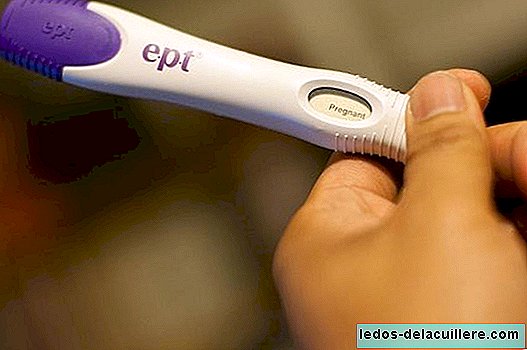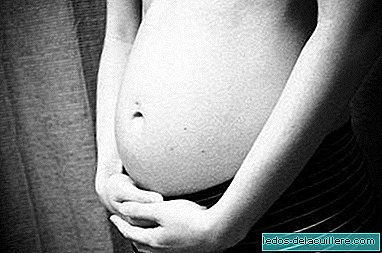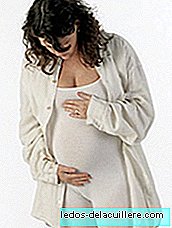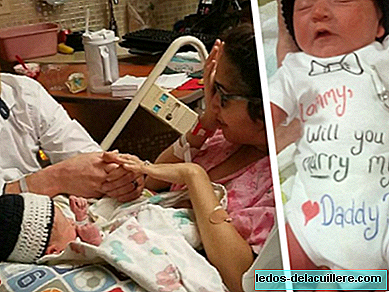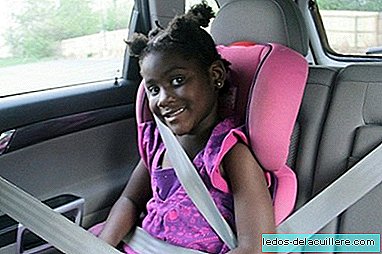
"The best way to protect a child when traveling by car is to always carry a safety seat," we know that, but RACE and CYBEX (in collaboration with the DGT) have studied how within the use of chairs, there are ways to further reduce the risk of injury.
According to the data available, it is urgent to take measures, and among these, the information to parents about protection systems should occupy a preferential position. The number of fatalities (under 14 years old) due to traffic accidents increased from 42 to 52 (between 2011 and 2012). Of them 77% occupied a vehicle, and 30% did not carry a safety chair at the time of the accident
The mentioned study has consisted of an impact test that demonstrates how in a side impact, the head damage is multiplied by six when the child travels in a lifter in front of a back-up elevator. To raise awareness about its use, information leaflets will be distributed, and training at points of sale will be enhanced.
The elevator with backrest facing the lifter
In a side impact, most injuries occur in the area of the head of children (Because these collide with the interior structure of the car), this is supported by various investigations such as Arbogat, Orzechowski or Newgard. In addition, the side airbag may not work, since the minor (due to its height) hits the door outside the area of influence of a system designed for adults.
Without backing, the child is displaced towards the door, and is only held in the area of the pelvis, the "dummy" (of a six-year-old child) shows how the head damage is multiplied by six, regarding the impact of a mannequin located in elevator with backrest.
During the side collision the occupants of the vehicle strike against the interior parts. The short distance between the passenger and the door structure, together with the fact that the belt does a little work of retention of the thorax against lateral movements, increases the risk of damage.
The chair with backrest incorporates guides that position the belt on the child's shoulder, adapting to its height, and that in case of a lateral impact, remains on the child's shoulder. The supports of the side of the seat, located in all the contour of the body (head, thorax and pelvis) standardize the contact forces and avoid the exposure of the body to direct contacts with the side of the vehicle. The child remains in the chair at all times
Studying retention systems
95% of respondents acknowledge taking children in their SRI, and 58% have an IsoFIX anchoring system. By relation of kinship with the transported children, the number of "grandparents" that take the children in the vehicle of maintenance with respect to 2012, with 19% of the cases. Regarding driving safety, two out of every 10 drivers acknowledged having suffered a risk situation behind the wheel with children on board, of which, 4% declared not to carry an SRI at that time, putting the child's life in danger.
As for opinions, 20% of the people who have been asked, he believes that an unsupported elevation from 25 kilos is more secure (which would correspond to a group 3), 25% do not know, and 6% believe that it doesn't matter if they have support or not. The remaining 51% consider the backup more secure.
35% of users of child restraint systems (parents and grandparents) say they do not have enough information when buying a chair
RACE and CYBEX campaign

The third edition of "Responsible safety" was launched, with the distribution of 500,000 brochures that include the most important tips when buying a safety chair: use, correct use, decalogue for parents. It will be present on the RACE website, social networks, and in the free RACE road safety application for smartphones (Iphone, Android and Windows Phone platforms).
Novelty: approval standard i - Size
Since July 2013, the new i-Size approval standard is in force. The most significant changes, with respect to the ECE-R 44, are:
Products must exceed one new side impact test.
The products they are no longer divided into weight categories. The manufacturer of SRI can decide for which sizes its child restraint system is suitable, e.g. for a child measuring between 40 and 100 cm.
All children must be transported up to 15 months in reverse direction (This is only applicable for SRIs that are approved as of the entry into force of the new regulations, not for products that have an ECE-R 44 approval).
Finally, remember that children must travel in their safety seats until they measure 1.35 meters, and that when using these safety systems, many mistakes are made, which are worth knowing.



